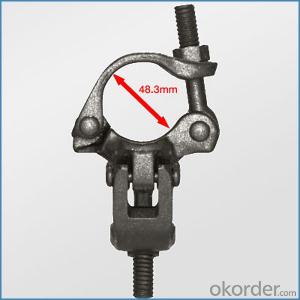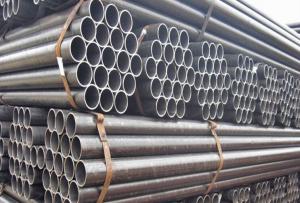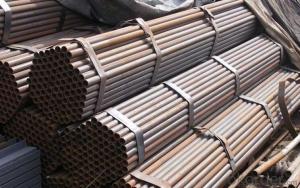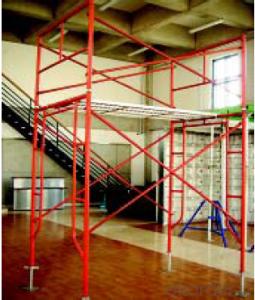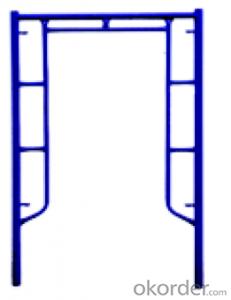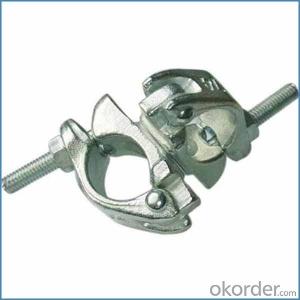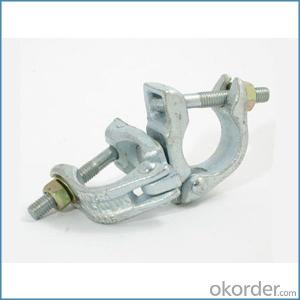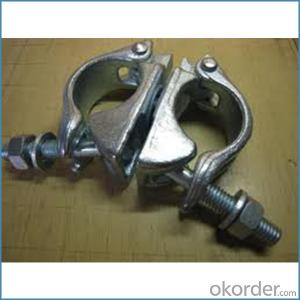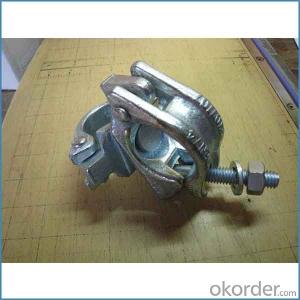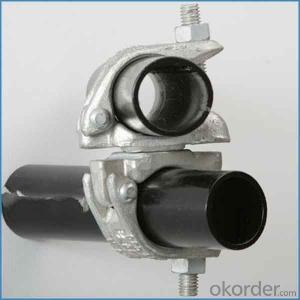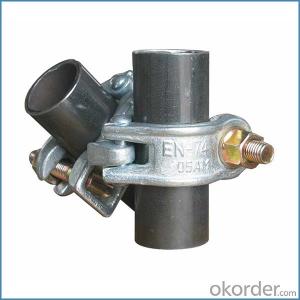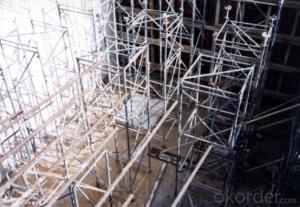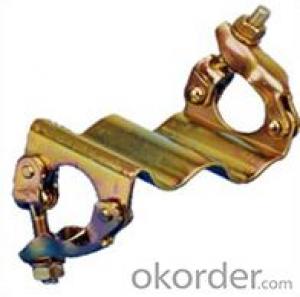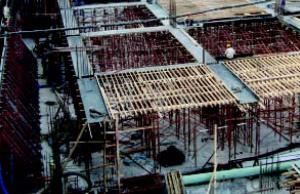Construction Coupler British Type for Sale
- Loading Port:
- Tianjin
- Payment Terms:
- TT OR LC
- Min Order Qty:
- 1000 kg
- Supply Capability:
- 100000 kg/month
OKorder Service Pledge
OKorder Financial Service
You Might Also Like
Construction Coupler British Type for Sale
Description
1.The scaffolding coupler is always used to connect the steel pipe as scaffolding system.
2.The often used coupler is swivel coupler and righ angle coupler .
3.We can provide types of scaffolding coupler according to your requirement.
4.Couoler can fix the 48.3mm scaffolding steel pipe tightly and make the whole scaffolding system more steadily.
5.Material:Q235 steel
6.Overall Size:48.3mm*48.3mm
7.Surface Finish: Galvanized/ Painted
8.Standard:BS1139,EN74
9.Package:25pcs/bag
10.Manufactuering as per customer requirements
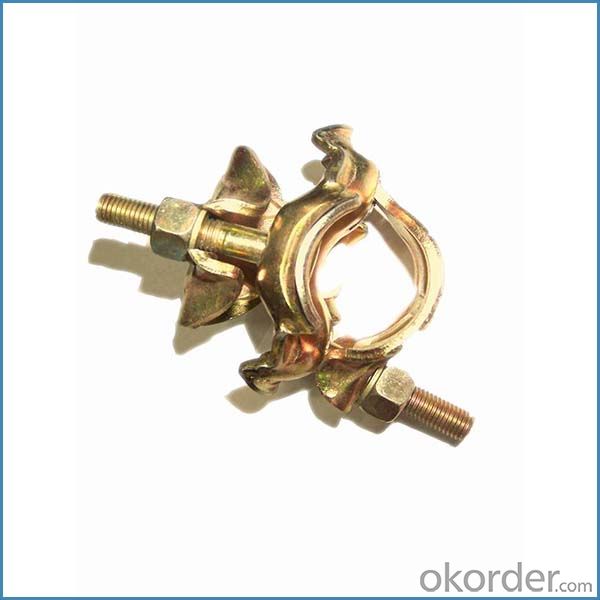
Feature
(1)Excellent Anti-Breaking—Cold Pressed Steel
(2)Outstanding Resistance Deformation
(3)Strong Anti-Dropping Ability
(4)Longtime USe
(5)Qualtity Guaranteed
(6)OEM Service
Photo

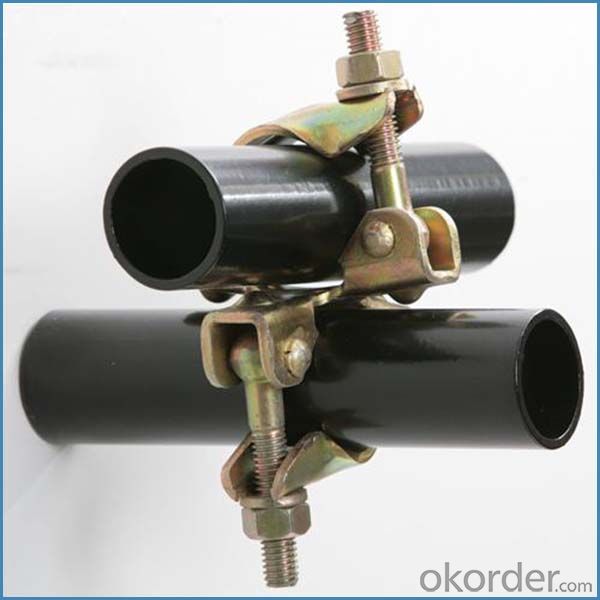
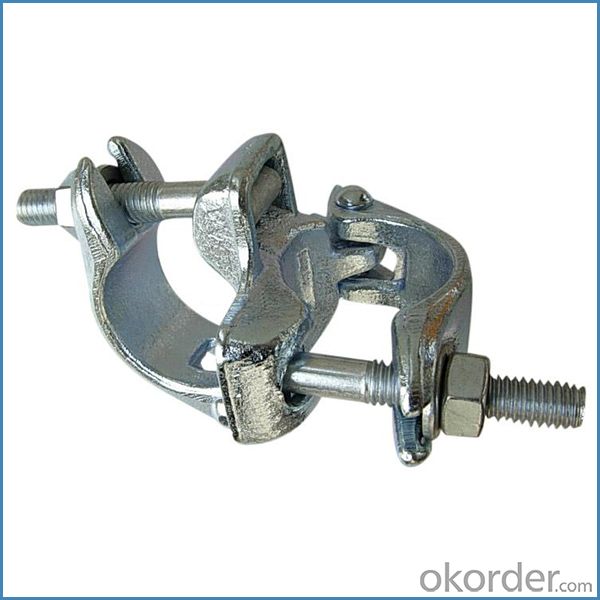
Parameter
| Material | Q235,345steel |
| Size | 48.3mm*48.3mm |
| Surface finish | Galvanized |
| Weight | 1.1kg around |
| Standard | BS1139,EN74 |
| Package | 25pcs/bag,steel pallet |
| Manufacture | As per customer requirement |
| Market | Africa, South America, the Middle East and Asia |
FAQ
Q: Are you a factory or trading company?
We are a state-owned corporation in China,dealing with various kinds of building materials.We have our holding subsidiaries.
Q: Where is your factory located? How can I visit there?
Our factory is located all around China.
Q: Can I get some samples?
Sample is free, customer only pay freight for the first time.
Q: Delivery?
10-30days. (5-15 containers)
Any question,feel free to contact us.
- Q: A 777 N window washer is standing on a scaf-fold supported by a vertical rope at each end.The scaffold weighs 260 N and is 4.13 m long.Assume the window washer stands 1.21 mfrom the left end.What is the tension in the rope on the right?Answer in units of N.009 (part 2 of 2) 10.0 pointsWhat is the tension in the rope on the left?Answer in units of N.Physics problem, please i need help!!! :(
- hard subject. look into over bing and yahoo. that might help!
- Q: How do steel tube couplers ensure the structural integrity and stability of scaffolding systems?
- Steel tube couplers are an essential component of scaffolding systems that play a critical role in ensuring the structural integrity and stability of the entire structure. These couplers are designed to securely connect steel tubes, forming a strong and reliable scaffold framework. One way steel tube couplers ensure structural integrity is by providing a secure and rigid connection between individual steel tubes. These couplers are specifically designed to tightly grip the tubes, preventing any movement or slippage. This tight connection ensures that the scaffold remains stable and does not sway or collapse under the weight of workers and materials. Moreover, the design of steel tube couplers allows for a wide range of angles and connections, enabling scaffolding systems to be adapted to various shapes and sizes. This flexibility allows the scaffolding to be customized to fit the specific needs of different construction projects. By using couplers to create precise connections between tubes, the scaffold can be constructed with accuracy and stability. Steel tube couplers also enhance the overall strength of the scaffolding system. By securely connecting multiple tubes, the couplers distribute the load evenly across the structure. This distribution of weight reduces the strain on individual tubes and prevents any weak points from developing. As a result, the scaffold can support heavy loads and withstand external forces such as wind and vibrations, ensuring the safety of workers and the stability of the structure. Furthermore, steel tube couplers are designed to withstand harsh environmental conditions and resist corrosion. This durability ensures that the connections between tubes remain strong and reliable over time, even in challenging working environments. By maintaining the integrity of the connections, the couplers contribute to the long-term stability and safety of the scaffolding system. In conclusion, steel tube couplers are crucial components of scaffolding systems as they ensure structural integrity and stability. By securely connecting steel tubes, they create a rigid framework that can withstand heavy loads, adapt to different shapes, and resist external forces. The durability and reliability of these couplers contribute to the overall safety and efficiency of scaffolding systems in construction projects.
- Q: 6 meters high outside the wall to be maintenance, scaffolding how to count
- Polystyrene foam board polystyrene Foam board is one of the three common wall insulation materials
- Q: While standing on a long board resting on a scaffold, a 60 kg painter paints the side of a house. If the mass of the board is 13 kg, how close to the end can the painter stand without tipping the board over?
- It very much depends on how and where (at which points along its length) the board is supported by the scaffold.
- Q: Can steel tube couplers be used in both indoor and outdoor scaffolding applications?
- Steel tube couplers have the versatility to be used in both indoor and outdoor scaffolding applications. These couplers are specifically designed to connect scaffolding tubes, creating a sturdy and reliable joint. Constructed from durable steel, they are capable of withstanding different environmental conditions, such as moisture, sunlight, and temperature changes. Consequently, they are suitable for both indoor and outdoor settings. Nevertheless, it is crucial to properly maintain and safeguard the steel tube couplers from corrosion when using them outdoors. This maintenance will guarantee their longevity and safety.
- Q: What are the common applications of steel tube couplers in scaffolding?
- Steel tube couplers are commonly used in scaffolding for various applications. They are primarily used to connect and secure steel tubes together, creating a stable and rigid framework. Some common applications of steel tube couplers in scaffolding include creating vertical and horizontal bracing, forming scaffolding towers and support structures, joining diagonal and transverse tubes for added stability, and connecting components such as base plates, ledgers, and transoms. Additionally, steel tube couplers are also used for attaching accessories like handrails, toe boards, and safety nets to the scaffolding system, ensuring a safe and secure working environment.
- Q: How do you dismantle and remove steel tube couplers from scaffolding?
- To dismantle and remove steel tube couplers from scaffolding, you will need a few tools and follow a systematic approach. Here are the steps involved: 1. Gather the necessary tools: You will need a hammer, a wrench, and a scaffold spanner. Make sure you have the appropriate sizes for these tools to match the couplers you are working with. 2. Assess the scaffolding structure: Before starting the dismantling process, evaluate the scaffolding structure to identify the couplers you need to remove. Take note of their locations and understand how they are connected to the tubes. 3. Loosen the coupler nuts: Using a scaffold spanner or a wrench, loosen the nuts that secure the couplers to the tubes. Turn them counterclockwise to release the grip. In some cases, you may need to tap the spanner gently with a hammer to loosen stuck or rusted nuts. 4. Remove the coupler nuts: Once the nuts are loosened, carefully unscrew them completely and set them aside. Be cautious not to drop them as they could be lost or cause injury if they fall from a height. 5. Separate the scaffolding tubes: Once the nuts are removed, you can now separate the scaffolding tubes by pulling them apart. You may need to wiggle or twist the tubes slightly to break any residual friction. 6. Remove the couplers: With the tubes separated, you can now remove the couplers from the scaffolding structure. Grasp the coupler firmly, and using a hammer, tap it gently from the side or underneath to dislodge it. If necessary, use a pair of pliers to provide additional leverage. 7. Repeat the process: Continue this process for each coupler you need to remove from the scaffolding structure. Take your time to ensure each step is executed safely and effectively. 8. Inspect and replace: After removing the couplers, inspect them for any damage or wear. If any couplers are broken or show signs of deterioration, they should be replaced before reassembling the scaffolding. Remember, safety should always be a priority when working with scaffolding. Ensure the structure is stable and secure, use appropriate personal protective equipment, and follow any specific guidelines provided by the manufacturer or your supervisor.
- Q: How do steel tube couplers accommodate different angles or connections in scaffolding systems?
- Scaffolding systems heavily rely on steel tube couplers, which play a vital role in accommodating different angles and connections. These couplers are specifically designed to securely join steel tubes at various angles, allowing for the construction of scaffolding structures in any desired shape or configuration. Among the various types of steel tube couplers used in scaffolding systems, the swivel coupler is quite common. This particular coupler consists of two plates that are connected by a bolt or pin. The plates feature aligned holes that match those on the steel tubes, ensuring a secure attachment. The swivel function enables the coupler to rotate or pivot, making it suitable for accommodating different angles between the tubes. This flexibility proves particularly valuable when building scaffolding on uneven surfaces or when dealing with non-standard angles. Another frequently used coupler is the right-angle coupler, which is specifically designed to connect tubes at a 90-degree angle. This type of coupler comprises two plates that are perpendicular to each other, with aligned holes for the tubes. Right-angle couplers are primarily employed for creating corners or joints in scaffolding structures. In addition to the swivel and right-angle couplers, there exist several other types of couplers, each designed to meet specific connection requirements. For instance, sleeve couplers are utilized for connecting two tubes end-to-end, while putlog couplers are intended for securing transoms to ledgers. These diverse couplers offer the necessary flexibility to adapt to different angles and connections within scaffolding systems. Overall, steel tube couplers play a crucial role in scaffolding systems by providing a dependable and secure means of connecting steel tubes at various angles or connections. They offer the flexibility required to construct scaffolding structures of varying complexity, ensuring the safety and stability of the system.
- Q: Can steel tube couplers be used for both primary and secondary connections in scaffolding?
- Both primary and secondary connections in scaffolding can utilize steel tube couplers. The purpose of steel tube couplers is to join scaffolding tubes together, establishing a firm and rigid connection. In construction scaffolding systems, they are commonly employed to connect both horizontal and vertical tubes. Regarding primary connections, which are the principal load-bearing connections in the scaffolding structure, steel tube couplers are implemented to link the vertical standards (uprights) to the horizontal ledgers and transoms. These connections necessitate strength in order to endure the weight and forces exerted on the scaffolding system. As for secondary connections, steel tube couplers are utilized to connect various components, including diagonal braces, guardrails, and toe boards, to the primary scaffold structure. These connections are typically mandatory for stability, safety, and compliance with regulatory standards. Steel tube couplers are the preferred choice for both primary and secondary connections due to their durability, strength, and user-friendly nature. They are specifically designed to fit standard scaffolding tubes and can be promptly and securely fastened using bolts or pins. It is crucial to ensure that the steel tube couplers utilized in scaffolding are manufactured in accordance with recognized industry standards and undergo proper inspection and maintenance to ensure safe usage.
- Q: How do steel tube couplers ensure the alignment and stability of scaffolding tubes?
- Steel tube couplers ensure the alignment and stability of scaffolding tubes primarily through their design and construction. These couplers are specifically engineered to securely connect and hold scaffolding tubes together, thereby creating a rigid and stable structure. One way steel tube couplers ensure alignment is through their precise dimensions and tolerances. These couplers are manufactured with high accuracy to ensure a tight fit around the tubes they connect. This tight fit helps to eliminate any gaps or movement between the tubes, thereby ensuring that they remain aligned and in the desired position. Furthermore, steel tube couplers are designed to provide a strong and secure connection between the scaffolding tubes. They are typically made from high-quality steel, which offers excellent strength and durability. This robust construction allows the couplers to withstand heavy loads and forces without any deformation or failure. In addition to their strong connection, steel tube couplers often incorporate additional features to enhance stability. For example, some couplers have locking mechanisms or bolts that further secure the connection between the tubes. These features help to prevent any accidental dislodgment or movement of the tubes, ensuring their stability. Moreover, the design of steel tube couplers allows for easy and quick assembly and disassembly of scaffolding. This ease of use ensures that the alignment of the tubes can be efficiently maintained during the construction process. It also enables the scaffolding to be easily adjusted or modified as needed, without compromising stability. Overall, steel tube couplers play a crucial role in ensuring the alignment and stability of scaffolding tubes. Through their precise dimensions, strong connection, additional stability features, and ease of use, these couplers provide a reliable and secure solution for constructing safe and stable scaffolding structures.
Send your message to us
Construction Coupler British Type for Sale
- Loading Port:
- Tianjin
- Payment Terms:
- TT OR LC
- Min Order Qty:
- 1000 kg
- Supply Capability:
- 100000 kg/month
OKorder Service Pledge
OKorder Financial Service
Similar products
Hot products
Hot Searches
Related keywords
